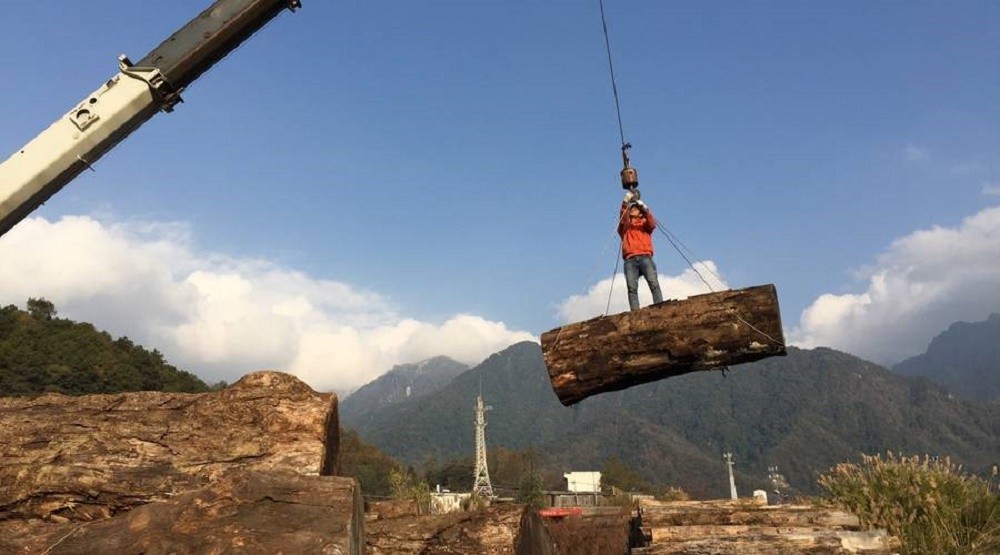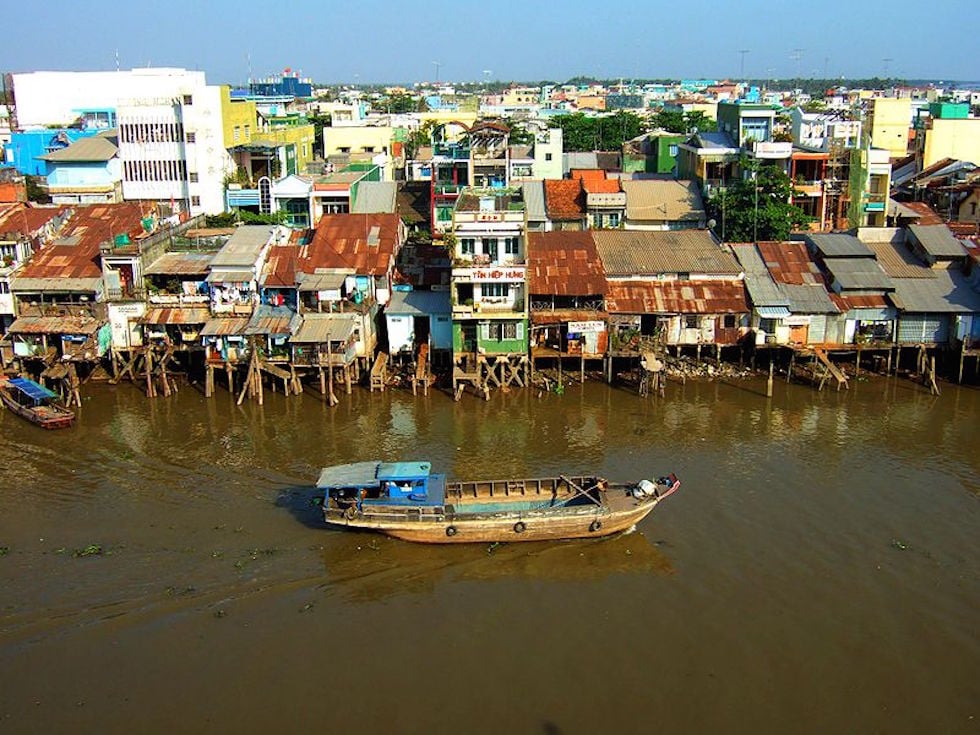While initiatives by the Asian Development Bank, ASEAN, United States, Japan, France and the private sector aim to advance renewable energy within the Greater Mekong Subregion (GMS), coal-fired power plants are slated to become an increasingly larger share of the region’s electricity generating portfolio.
Category: China
Chinese demand wiping out forests of neighboring Burma
The streets of Pianma are lined with sawmills. They’re also lined with logs as big as cars: Teak, Rosewood, and Golden Camphor — all of them felled illegally across the border in Burma from old growth forests and brought to the Chinese side to be cut down into furniture.
China’s Belt and Road initiative ripe with possibilities
FOLLOWING THE launch of its ambitious Silk Road Economic Belt and 21st Century Maritime Silk Road (Belt and Road) initiative in a big way, China followed it up with last month’s official inauguration of the Asian Infrastructure Investment Bank (AIIB), which is now operational.
China drives water cooperation with Mekong countries
China is more closely involved in cross-border cooperation on hydropower and water management after the six countries that share the Mekong River signed a landmark agreement late last year.
While more needs to be done between these countries to resolve disputes and encourage transparency over dam building and shared water management, the agreement signals a greater willingness to discuss areas of discord that have soured relations in the region in the past.
During their meeting in in China’s southern province of Yunnan in November 2015, the foreign ministers of China, Myanmar, Laos, Thailand, Cambodia, and Vietnam launched the Lancang-Mekong Cooperation Mechanism (LMCM), an initiative pitched at the November 2014 Summit Meeting between China and the Association of Southeast Asian Nations (ASEAN) in Naypyidaw, Myanmar.
Risks loom for Myanmar’s Kyaukphyu Economic Zone
The end of 2015 saw a series of major announcements and decisions regarding Myanmar’s latest special economic zone (SEZ) in Kyaukphyu township of Rakhine State. In late December, Myanmar’s government approved the demarcation of land for the SEZ and awarded tenders to develop the SEZ to a CITIC Group-led consortium.
With AIIB, Nation Diversifies Funding Options
Though it’s extremely early days, experts this week welcomed Cambodia’s membership to the nascent China-led Asian Infrastructure Investment Bank (AIIB), saying it would provide much-needed diversity of funding for the nation’s infrastructure and connectivity needs.
Launched in Beijing last weekend, the multilateral development bank aims to support infrastructure growth in the Asia-Pacific region through the provision of loans, and supports China’s ambitious “One Belt, One Road” initiative to boost trade and connectivity across the Eurasian landmass.
Locals from Kyauk Phyu SEZ criticize the Chinese Investors
On 30th December, the government of Myanmar announced that the CITIC Consortium, which comprises of 6 Chinese companies, wins the bid to develop Kyauk Phyu SEZ. Mr. Win Shein, the MP from Kyauk Phyu said, the last minute agreement before the current government hand over the power to the new NLD-led government, could involve fraud and corruption between the government and Chinese investors. The bid for the SEZ takes 24 months, 16 companies have compete for the bid, but the government approve CITIC in rush. CITIC Consortium states it will invest about 9 bn US$ for the Kyauk Phyu SEZ project, which covers 4200 acre of lands.
Mekong Region: Asia’s New Growth Center and Strategic Frontier
The Mekong countries of Cambodia, Laos, Myanmar, Thailand, and Vietnam are emerging to be not only the new growth center but also a new strategic frontier in Asia.
With a population of around 240 million and a combined GDP of $664 billion, the Mekong region has geopolitical significance and economic weight. It is located at the junction of the enormous emerging markets of Asia and their combined population of about 3.3 billion.
Myanmar’s landmark election and the likelihood of a peaceful and smooth power transition have drawn more international attention and interest to the Mekong region as a whole. Myanmar is expected to be a key regional actor and now possibly a catalyst of regional peace, democracy, and development.
China, Mekong countries launch Lancang-Mekong Cooperation framework
The Lancang-Mekong Cooperation (LMC) framework was officially launched on Thursday following talks among senior foreign affairs officials from China, Thailand, Cambodia, Laos, Myanmar and Vietnam in Jinghong, Yunnan Province.
FOCUSING ON THREE KEY AREAS
The Lancang-Mekong River is a natural link between the six countries.
At the first LMC foreign ministers’ meeting, they decided to cooperate in three key areas – politico-security issues, economic affairs and sustainable development, and social affairs and people-to-people exchanges.
At the invitation of Chinese Foreign Minister Wang Yi, Cambodian Deputy Prime Minister and Minister of Foreign Affairs Hor Nam Hong, Lao Deputy Prime Minister and Minister of Foreign Affairs Thongloun Sisoulith, Myanmar Foreign Minister U Wunna Maung Lwin, Thai Foreign Minister Don Pramudwinai, Vietnamese Deputy Prime Minister and Foreign Minister Pham Binh Minh attended the meeting, and Wang Yi and Don Pramudwinai co-hosted the meeting.
China, Laos to build $6.3 bln railway project by 2020 – China Economic Herald
China aims to complete laying a 418-kilometre (260-mile) railway from a border town to Laos by 2020, the official China Economic Herald reported, as the economic giant seeks a new route into the emerging markets of Southeast Asia.
The two countries agreed on Friday to jointly build a 40-billion yuan ($6.28 billion) railway from the border town of Boten to the Laos capital Vientiane, the Herald reported.
The deal was announced at a signing ceremony attended by senior officials from the National Development & Reform Commission the country’s top economic planner, China Railway Corporation and the Export-Import Bank of China, the paper said.
Laos, poor and landlocked, has traditionally been firmly in the orbit of its larger neighbour to the east, Vietnam.
But China has been aggressively courting Laos as it sees the communist-ruled country as an important route into Southeast Asia, and its ports on the Mekong River for landlocked parts of southwestern China such as Yunnan.








